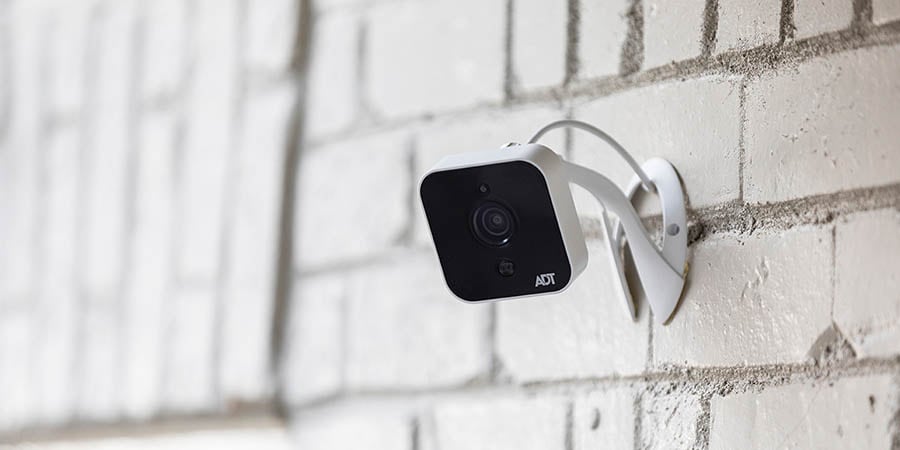When you're putting up a home security system for the first time, knowing where to start can be difficult. One of the first questions you'll be asking is, "how many security cameras do I need?"
Security cameras are a crucial part of any security system. Of the 1.4 million burglaries in the U.S. in 2017, 67.2% took place in residential properties. Cameras can help deter burglars and keep your home secure.
Besides home security, they allow you to keep an eye on kids, pets or enforce house rules even when you're away.
For an effective home security system, you need to have enough cameras to cover every corner of your home. You'll also need to consider what type of cameras to get and what features they should have.
This guide will help you get started. Read on to know all about security camera types and how many your home needs.


Indoor Security Cameras
An indoor camera allows you to keep tabs on whatever's going on inside your home by giving you a live feed. This is useful for monitoring family members, pets, or the sitter or nanny while you're away. Recorded footage can also serve as evidence in the event of intrusion, theft, or vandalism.
An indoor camera also allows you to stay connected to your family or pets. Some cameras can work with a communication system enabling you to talk to anyone indoors.
There are also several features you should be looking for with an indoor security camera. If you want to have a conversation with family members or the sitter, you'll want a security camera with two-way audio.
Night vision allows you to see what's happening even in the dark of nighttime. Motion detection triggers the surveillance camera only when there's action. HD resolution also ensures you'll have a high-quality picture of whatever's happening.
For your convenience, you'll also want your indoor cameras to be accessible through an app. This means it should also have Wi-Fi connectivity so it can sync with your other devices.


Outdoor Security Cameras
These are the home security cameras best suited for deterring potential crime. A survey of convicted burglars found that visible outdoor cameras can discourage burglars. They see it as a risk that's not worth the effort.
You'll also be able to check any odd noise or motion outside your house at night. In case it's an intruder, you'll know from the security camera feed while still being safe inside.
Outdoor CCTV cameras can also help in protecting packages on your porch. Besides your packages, outdoor security cameras can also help protect your vehicles. If you park your car on a driveway, you'll be able to keep an eye on it through the camera feed.
In cases of intrusion or vandalism, the footage can also serve as important evidence. It can help you and the authorities identify perpetrators.
Aside from keeping security, outdoor cameras also help you check in on family and pets. You'll be able to keep an eye on kids or pets who might be playing outside.
Like with indoor cameras, you also want a specific set of features for your outdoor cameras. Considering the likelihood of crime happening at night, night vision is a must-have. Motion detection is also handy so the cameras can auto-record once any action happens.
HD resolution is also a must if you want your feed or potential evidence to be crystal-clear. Last, your outdoor cameras should be weather-proof. They need to be resistant to the temperature and other elements like rain or snow.
Wired or Wireless Security Cameras?
Wired and wireless security cameras both have their advantages and disadvantages. Your choice will depend on which benefits you need more and the factors of your home.
A Wired home security camera needs a hardwired connection to send footage to a central recording hub. They also need a power supply which can be a separate connection or through the same wires as the video feed.
The advantage of wired cameras is that the transmitted information is more secure. As long as the wires remain connected, the camera feed is safe regardless of distance. This is great if your security system needs to cover a large area since you don't need to rely on the Wi-Fi signal or speed.
However, they can be susceptible to power outages. They can also take longer to install, and larger areas mean more wires.
Meanwhile, wireless security cameras can send their video signal without hardwired connections. They're usually battery-powered and rechargeable. However, some models might still need a hardwired power source.
Wireless cameras rely on your Wi-Fi network. They send video footage to the router. From there, the feed is accessible through other devices like your phone or stored on the cloud.
This allows companies like ADT to send you notifications when the cameras detect movement. You can then view the footage straight on your smartphone using their app.
The placement of a wireless home security camera is crucial as they rely on quality WiFi signal to work. They should be close enough so they can send their feed without interruption. You also need to check on battery-operated wireless cameras' power levels.


Places to Install Security Cameras
Placement is also essential in setting up an effective home security system. You'll want the cameras to be where most of the action in your house happens and cover the most vulnerable areas. Asking how many security cameras do I need means you'll have to know where they're needed.
Front Door
Don't assume that intruders always try to be sneaky by using side entrances. Statistics actually show that 34% of burglars go through the front door. This is also where package thieves tend to strike.
Placing a camera at the main entrance allows you to watch whoever comes in and out of your house. This includes family members, sitters, maintenance staff, and others.
Back and Side Doors
These doors are usually out of sight and are convenient spots for people to enter undetected. If your secondary doors are being used as often or more than the main entrance, placing a security camera is necessary. This will ensure that you have full knowledge of who's entering or exiting the house.
Yard
An outdoor camera feed of the yard will help you keep an eye on whoever might be eyeing your house from the outside. It's also helpful for checking in on your children's outdoor activities.
Garage and Driveway
A security camera system here allows you to check on vehicles, tools, sports equipment, and anyone who handles them.
An outdoor security camera keeps you connected if you have a garage separate from the rest of your house. If it's part of the house, then it's another entryway to secure with a video feed. You may also want a camera at a garage gate to eye potential intruders.
Common Areas
Cameras in high-traffic areas like the living room or kitchen allow you to see what everyone is doing. You can check if the kids are doing homework or playing and if the babysitter is attentive. You'll also be able to check on household help or repairmen.
Main Hallway or Stairway
Make sure that cameras also cover the main passages of your home. This will make it hard for any uninvited person to move around undetected. In case intruders break through an unmonitored area, they can't go any further without surveillance and detection.
Areas With Valuables
You'll also want to put an indoor cam in areas if they contain valuables. This can include the master bedroom. This is one of the places where burglars look for cash, jewelry, or safes.


How Many Security Cameras Do I Need?
The number of security cameras will depend on your priorities and other factors. If you're looking to deter intruders or burglars, then you need more outdoor cameras. If you need to keep an eye on family, pets, or sitters, then you'll want more cameras that cover your home's interior.
The other factors you'll have to consider are the size of your home and property. Bigger properties will need more cameras. If you have outbuildings with valuables, these also need coverage.
In general, here are the number of cameras you might need in the following areas:
1 outdoor camera for the front porch
1 doorbell camera
2 outdoor cameras for the front and back yards
3 outdoor cameras for either side of the house
4 indoor cameras for the living room
4 indoor cameras for the hallway
2 indoor cameras for the child's bedroom
2 indoor cameras for rooms with valuables or safes
You can add more cameras if you feel certain areas need an extra set. If you're installing video surveillance yourself, check out Blue by ADT. They're DIY security cameras you can install by yourself in 20 minutes.
Choose ADT to Help Set up Your Home's Security
Now you know the things to consider when setting up your home's security system.
When it comes to your family's home and safety, a professional opinion can be of great help in ensuring a foolproof security system. If you're asking how many security cameras do I need, then trust ADT to help you decide.
ADT has trained technicians and expert customer support staff. Contact us today, and we can help you through the process of securing your home. Keep your family safe with ADT home security.
Related Articles:


